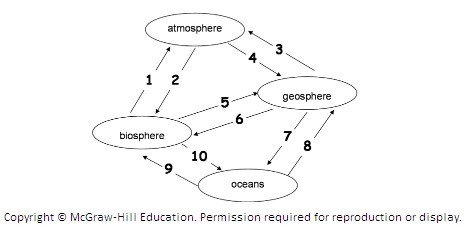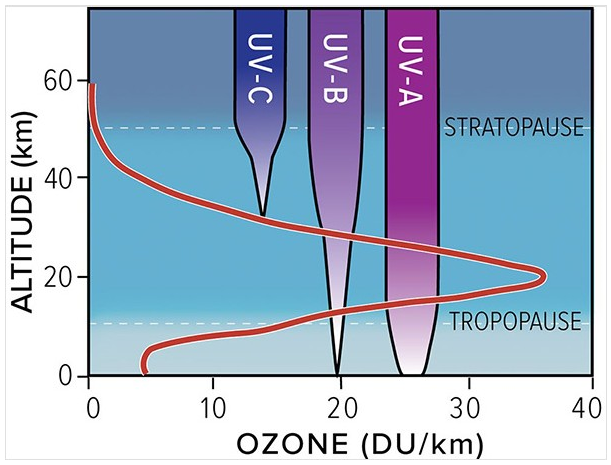The following diagram illustrates the Carbon Cycle. Each arrow represents the transfer of carbon from one component of the Earth system to another. For example, arrow 1 represents the transfer of carbon from the biosphere to the atmosphere. Match the answers below to the number on the diagram. Match the answer to number 3 on the diagram.
Match the answer to number 3 on the diagram.
A. Decay
B. Volcanic eruption
C. Photosynthesis
D. Fossil fuel formation
E. Respiration
Answer: B
You might also like to view...
The atmosphere is mainly transparent to this form of ultraviolet radiation?

A) UV-C
B) UV-B
C) UV-A
D) The atmosphere is equally transparent to UV-A, UV-B, and UV-C radiation.
When ice floats in water, a small part of it extends above the surface. Interestingly enough, the volume of ice that extends above the surface is equal to the volume of the
A) water the ice displaces. B) vast number of open spaces in the hexagonal ice crystals. C) both A and B D) neither A nor B
German geographer Friedrich Ratzel suggested that each nation needed Lebensraum, which means
A) geopolitics. B) room to live. C) survival of the fittest. D) the strong will survive at the expense of the weak.
Why do large, broad beaches have gradual slopes?
a. They have coarse particles. b. They are not in equilibrium. c. Larger particle tend to build up at the back of the beach. d. They have a large area for wave energy to dissipate. e. Onrushing water disappears into the beach minimizing transport back to the ocean.